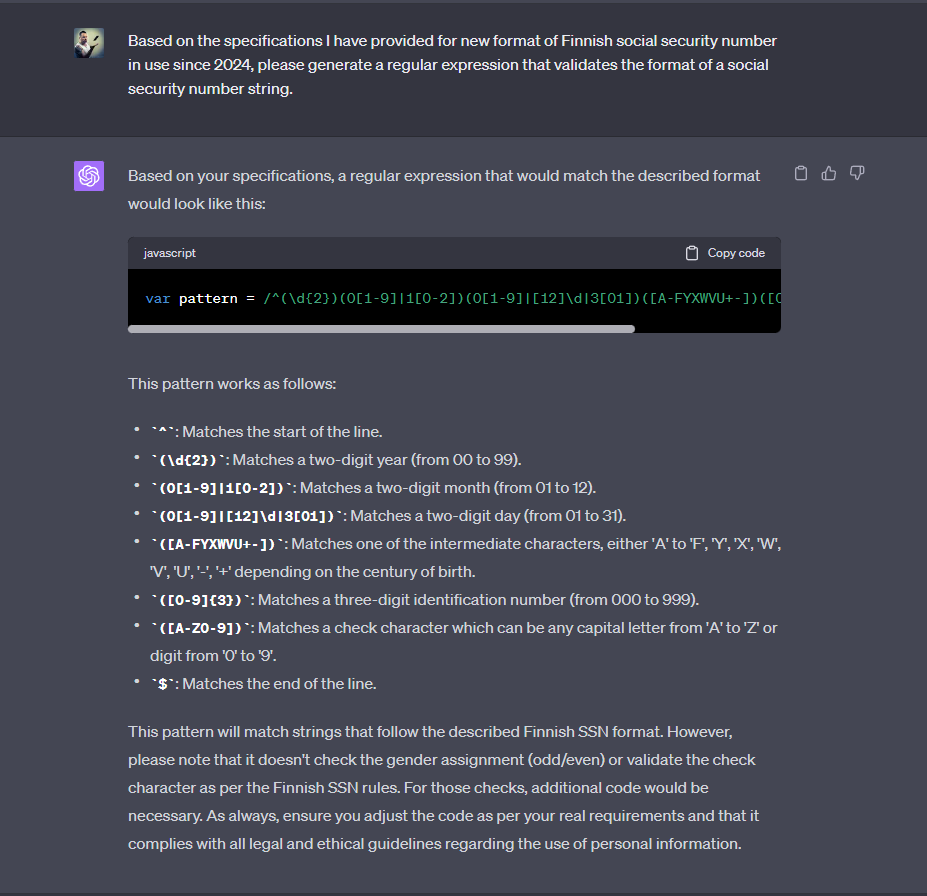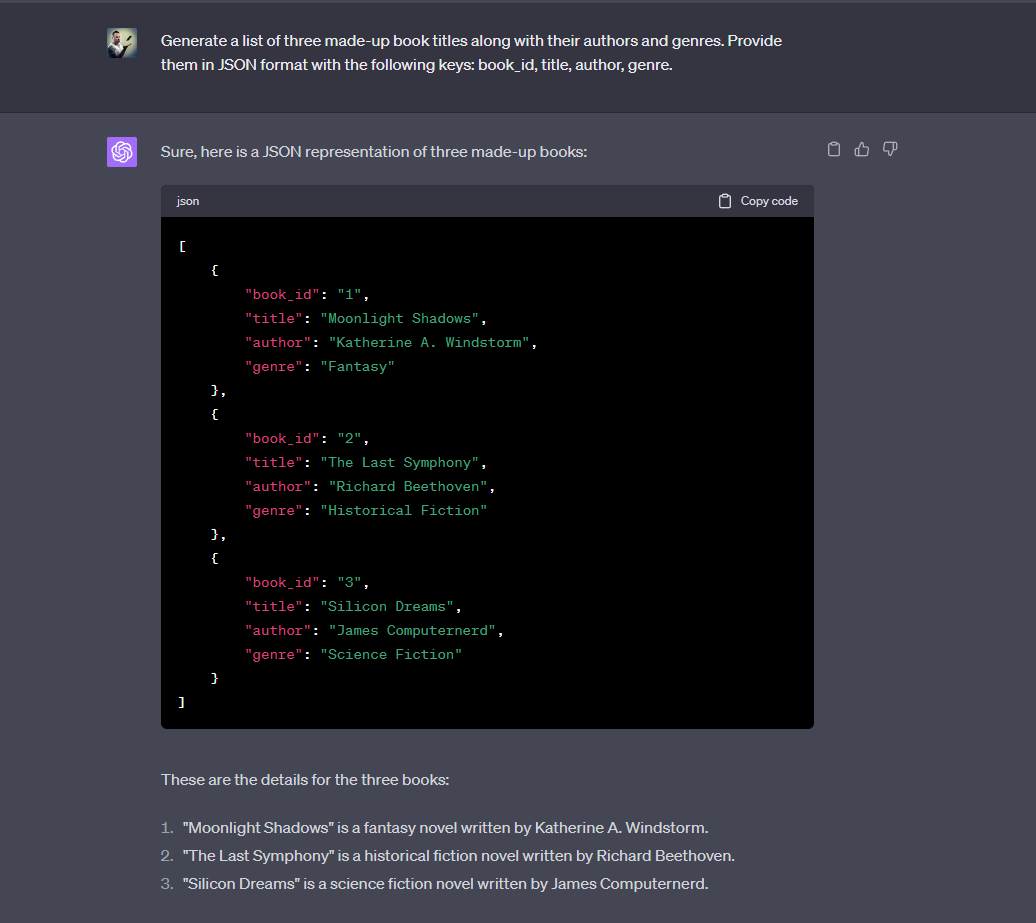Introduction: Practical Applications of AI in Software Development
As software developers, we know that stagnation isn’t an option. Staying still means falling behind. OpenAI’s AI tool, ChatGPT, is making waves across various sectors, including software development. Think of ChatGPT not as a standard chatbot but as a digital partner that understands your instructions and even generates code snippets. It’s like having a copilot pair programmer helping you with programming tasks, that never gets tired of answering questions.
The role of AI in creative areas like writing, music, and visual arts has been growing fast, and now, the creative art of software development is also feeling its impact. The question is, will developers become obsolete, or will these tools simply enhance our abilities? While I don’t have a crystal ball, I know this: adaptability is key to survival. In this blog post, I’ll explore ChatGPT and share practical tips to help you get the most out of it. Ready for a transformative coding journey? Let’s get started!
Understanding New Languages: Using ChatGPT as Your Programming Assistant
Imagine you’ve stepped into unfamiliar territory with a new programming language. Decoding it can be as daunting as learning a foreign language. But what if you had a personal AI translator for code, fluent in a variety of languages?
ChatGPT is that translator. It understands mainstream languages like Python, Java, and C++, as well as less common ones like Haskell, Lisp, Mumps, and even Commodore 64 Basic. Need help with a Bash script or decoding regex? ChatGPT is on it.

By analyzing vast amounts of text data from the web, ChatGPT generates code sequences that mimic the insights of experienced coders. Stuck on a JavaScript function? ChatGPT can help. Unsatisfied with the result? Ask for a rewrite. It’s like having a tireless coding partner, always ready to help.
If you’re a Python master suddenly thrown into a Ruby project, you can ask ChatGPT questions like “How does array iteration work in Ruby?” or “What’s the Ruby equivalent of Python’s list comprehension?” If you’re having trouble with your code or tools, ChatGPT is there to offer guidance.
If you are just learning your trade, it can be really powerful to have a knowledgeable “partner” to ask questions from. It can sometimes be daunting to keep on asking “stupid questions” from your colleagues, but ChatGPT is always there to help you out. Some studies already show that people might be more comfortable asking questions from a chatbot than from a human.
Remember, though, that ChatGPT isn’t perfect — it’s more like a veteran developer (during after-work sessions), usually accurate but occasionally prone to errors. So, use it as a guide and cross-check its insights with your own research. It’s like having a mentor in your pocket, always ready to assist in your coding journey.
More Than Just Writing Code: Using ChatGPT for Generation, Documentation, and Translation
A developer’s job isn’t just about coding. We also design, debug, test, document, and translate code. ChatGPT can assist with these tasks too.
Have you ever felt lost in a maze of undocumented code? ChatGPT can help by turning cryptic code into understandable narratives. Need to write test code? Ask ChatGPT to create tests based on a draft specification, then refine the tests until they meet your needs.
Planning to refactor? ChatGPT can assist. With a simple “refactor this code” command, it can transform your code into a neater version. You can also tailor its approach by giving specific instructions like “refactor this code in a more functional manner.”
Need some specifications or database models to start iterating the solution? ChatGPT can help with that too. Just ask it to generate a database model or a specification based on your requirements. It can even generate a basic UI and the first POC for your app. Perhaps you could do with some synthesized test data that is not too far from the real thing?

And if you have Java code that you need to translate into Python, ChatGPT’s multilingual abilities can help save precious time. It’s particularly useful for translating code written in languages you don’t use often.
In essence, ChatGPT isn’t just a tool — it’s your AI assistant in software development, improving productivity, clarifying code, and bridging language gaps. It’s here not to replace you but to augment your abilities and make coding less daunting and more enjoyable. At least it can be when you are using it properly.
Pro Tips to Boost Your Work with ChatGPT
Using ChatGPT to its full potential doesn’t require you to master complex codes or algorithms. It’s all about understanding the best ways to communicate with it. Here are a few tried-and-tested tips to improve your productivity:
Clearly Define Your Requirements
Just as you would do with a human assistant, ensure you give clear and detailed instructions to ChatGPT. Providing more context will lead to a better understanding and more accurate responses. And remember, a little courtesy doesn’t hurt and can even improve the interaction!
Take Advantage of Larger Token Limits
Tokens are like words - units that the AI model reads in sections. Using larger token limits allows you to provide more context for ChatGPT to work with. But remember, both your inputs and the model’s outputs count towards these limits. Providing plenty of context can result in more detailed and accurate responses.
Note: Currently the GPT-4 model has much larger token limits available than the older GPT-3 model. There has also been some plans to raise the token limits to crazy numbers like a million. Of course tokens cost resources, and thus money to use, so there’s something to be said also for being concise and using summaries for cost optimization purposes. You have to find the right balance between the two.
Explore the OpenAI Playground
While ChatGPT is great for natural language interfaces, the OpenAI Playground offers a more technical and flexible platform to harness AI’s capabilities. The Playground allows you to adjust parameters like temperature and max tokens, enabling you to fine-tune the interaction for the best results.

And there’s also the API to build your own tools. Using the API, you can of course integrate ChatGPT into your own applications, but you can also build your own tools to help you with your work. For example, you could build assistant chatbots, a tool that generates test data for you, or a tool that generates documentation for your code. I’m sure we’ll see more of these offerings in the future.
Keep Iterating
Don’t get disheartened if you don’t get the perfect response in the first go. Keep providing more context, rephrase your question, and ask again. Treat each interaction as part of an ongoing dialogue, not a single query and response.
Risks and Rewards of ChatGPT in the AI Landscape
The power of AI, like ChatGPT, comes with its own set of risks and concerns. Two major areas that require careful attention are data ownership and response accuracy.
Data Ownership and Privacy
With OpenAI-hosted ChatGPT, you are essentially entrusting them with your data. While it may not matter much if you’re working with public data, it becomes a significant concern when dealing with sensitive or proprietary information.
To address these concerns, businesses are increasingly opting for Microsoft’s ChatGPT service via Azure cloud. OpenAI has also enhanced data control options, letting users maintain conversation histories or prevent their input data from being used for model training. Nonetheless, for dealing with classified or personal data, including source codes, self-hosted models with strong data controls are recommended.
There are also open-source models available you can run on hardware you own. Granted, none of them are as good as ChatGPT yet - but their running costs are also much less, and they will only get better from here. Some people are already running LLM models in Raspberry Pi’s.
Response Accuracy
ChatGPT is powerful but not infallible. Its outputs can sometimes be inaccurate, inappropriate, or offensive. Even the generated code might fail to compile or not function as intended. So, ensure to thoroughly review the AI’s outputs, especially when using them for professional purposes.
In other words, it’s okay to use ChatGPT for inspiration, but don’t blindly trust its outputs. It’s a tool, not a replacement for your own knowledge and experience. There’s also the question of responsibility. If you use ChatGPT to generate code that causes a security breach, who’s to blame? You or the AI? I think I can guess the answer here…
Knowledge Currency
ChatGPT’s training data only covers information up to 2021. This means it may not be up-to-date with recent advancements in AI technology that have come to light since then.
However, new options are emerging that let you feed your own documents or knowledge libraries into ChatGPT for querying. This custom knowledge base could potentially be indexed for faster access, a feature that’s already available in some self-hosted models and likely coming soon to OpenAI-hosted models.
Speaking of knowledge currency, there’s a big question on copyrights and ownership of the generated code, as well as the knowledge that is used to generate it. There are definitely some gray areas here, and it’s not clear how this will play out in the future. But it’s something to keep in mind right now.
Wrapping It Up: Get Ready for the Future with ChatGPT
ChatGPT is a powerful tool that can help you become a more productive and efficient developer. It’s not here to replace you but to augment your abilities and make coding less daunting and more enjoyable.
While you should stay cautious about the use of sensitive or proprietary data and source code, you should keep up to date with these trends and tooling, and be ready to adapt to the future of AI in software development. This means even better tooling to boost your work and productivity and raise the abstraction level of producing good quality software solutions faster.
Currently, there’s a lot going on in the AI space, and it’s hard to predict what the future holds. But if I had to hazard a guess, I would say we will see the models get lighter and more compact, cheaper to use, and more accessible to everyone. This would mean being able to embed these capabilities into your own solutions easier and being able to control the data and privacy aspects better. This has already begun, but it will only get better from here.
Some useful links and references
- https://www.solita.fi/en/generative-ai/
- https://openai.com/blog/chatgpt
- https://azure.microsoft.com/en-in/products/cognitive-services/openai-service/
- https://jamanetwork.com/journals/jamainternalmedicine/article-abstract/2804309
- https://www.trendmicro.com/en_fi/devops/23/e/chatgpt-security-vulnerabilities.html
